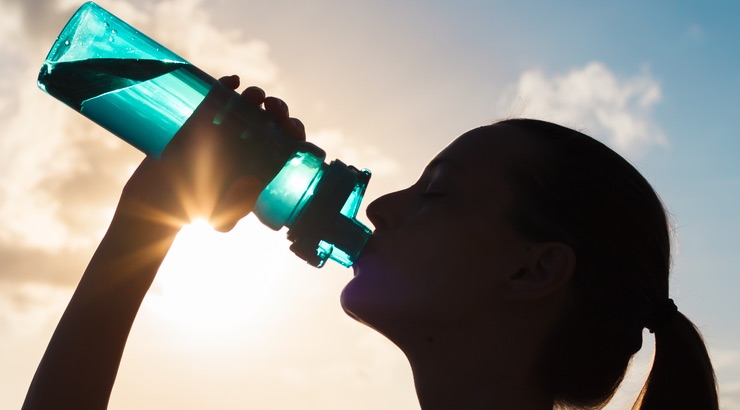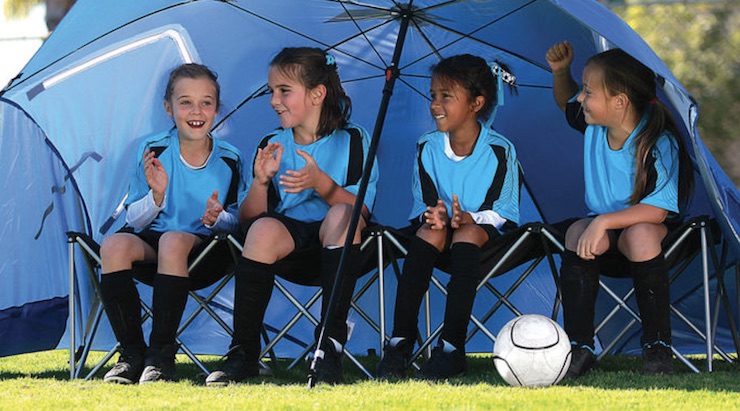Preparing For Tournaments With John Gallucci Jr.
As youth soccer tournament season is here, preparation is super important for players who want to perform to best of their abilities during a long competitive soccer weekend.
Here is great advice on how to be your best — and try to minimize the risk of injury at a youth soccer tournament from John Gallucci Jr., MLS Medical Coordinator and medical analyst for coverage of the 2015 FIFA Women’s World Cup.
Related Article: Preventing Injuries In Soccer & Why Goalies Are Different
Youth Soccer News: Tournament season is kicking off all across America which means that our young athletes will be physically and mentally taxing their bodies by playing multiple games per day in the hot, summer sun. Therefore, it is our job as coaches and parents to give them the proper tools they need to stay healthy and performing at their best throughout this short, competitive season.
Start the Day Off With a Well-Balanced Meal
Tournament days can be long days. Fuel the athlete’s body with the appropriate nutrients (carbohydrates, proteins, good fats) so it can sustain the stressors placed upon it throughout the day! Remember to stay away from any greasy or heavy meals as this will slow the athlete down during play.
Before Exercise: It is best to eat 1-2 hours before beginning exercise and the meal should consist of healthy carbohydrates. Examples include oatmeal, bananas, whole wheat toast, peanut butter and jelly sandwich.
After Exercise: It is best to eat 20-60 minutes following exercise so that your body can use the nutrients for recovery. The meal or snack should include a mixture of proteins and healthy carbohydrates. Examples include grilled chicken, yogurt, protein bar or shake.
Complete a Proper Warm-up and Cool-down
Be sure to run through a proper warm-up and cool-down of dynamic and static stretches, as well as plyometrics, before and after playing each game. These routines can help prevent injuries during the game and will prepare the body for the next game.
Hydrate, Hydrate, Hydrate
Our bodies crave water! This becomes especially true during periods of high intensity activity or extended heat exposure. Water consumption should begin 72 hours before activity by drinking six to eight, 8-ounce glasses of water per day. During activity, one should drink six ounces of fluid (preferably water) every 15 minutes and should then rehydrate following activity with 32 ounces of liquid per 1 pound of fluid loss.
Find a Shady Spot
Heat related illness, such as heat cramps, heat exhaustion and heat syncope are all brought about with exertion- even with proper hydration- and can be dangerous for the athlete if not recognized and treated early.
In an attempt to reduce onset of these heat illnesses, reduce sun exposure as much as possible by placing the sideline bench in the shade and remaining in the shade in between games.
Although it may be hot outside, reducing the amount of sun exposure can aid in cooling down one’s body as well as reduces the risk of sun burn.
And this applies to soccer players of all ages – youth soccer players and adult soccer players.
Be Prepared
Check the weather report and pack sunscreen, umbrellas or a change or clothes. Pack extra snacks for a quick bite on- the- go. Check the tournament schedule and plan accordingly.
Of course there are always unforeseen events that can take place, but being prepared for the day ahead leaves a smaller chance for mishaps and added stressors.
Utilize Breaks Wisely
We don’t see professional or even college level teams playing two to three games in a day or five to six games over the course of a weekend simply because it is very stressful on the body and leaves little to no time to recover.
Due to time restrictions however, our youth athletes are subjected to this type of play over the course of tournament season so parents and coaches should be aware of breaks in the schedule and should utilize this time wisely.
Have the athlete relax in a cooler climate or shady area, re-hydrate, fuel up, and ice down any aches and pains.
HAVE FUN!
The most important thing to remember is that sports are supposed to be fun and winning the game, or scoring the most goals, shouldn’t be the only goal!
Lacing up those cleats, getting some exercise and building team camaraderie should be considered a win in anybody’s book.
Tournament season can be a fun experience for our youth soccer players but we must remember the above in order to minimize risk of injury and maximize their level of play!

For more information in regards to common injuries and rehabilitation, please be sure to check out Soccer Injury Prevention and Treatment: A Guide to Optimal Performance for Players, Parents, and Coaches written by John Gallucci Jr., MS, ATC, PT, DPT.
John Gallucci’s book is available on Amazon on his JAG Physical Therapy site.
RELATED ARTICLES: In Soccer: What To Expect While Recovering; ACL INJURIES: Why Female Soccer Players Are At Greater Risk & What You Can Do












